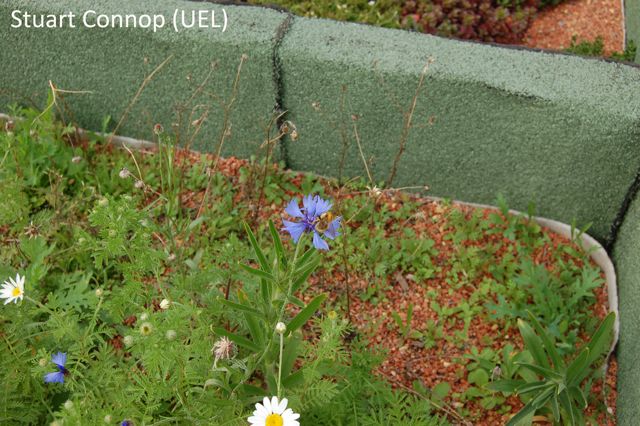We have been saying it for a number of years and they have been recorded on roofs in Switzerland, This September Dr. Stuart Connop and Dr. G. Kadas identified a Shrill carder bee (Bombus humilis). It was seen foraging on a green roof.
Shrill Carder bee – Barking Riverside
Both Dr. Kadas and I have been convinced that we would eventually record one of the rarer bombus species on a roof. We We have both written on the subject of bees, invertebrates and green roofs. In the next few weeks will be publishing new guidance on green roofs and biodiversity. The report was co-authored with Gary Grant and will be published by Buglife – The Invertebrate Charity and Livingroofs.org. This observation supports much of our findings, research and the new guidance.
This September the new experimental field station at Barking Riverside in the East of London and in the heart of the Thames Gateway area was visited by the species. The field lab is not regularly observed but bees were seen at the beginning of the month and we again seen at the end of the month.
Update – Shrill Carder bee – the Olympics
A year later, in 2014, Dr. Stuart Connop also found Bombus humilis on the largest green roof built for the Olympics. What is great about this is that the species was a target for the Olympic Biodiversity Action Plan.So we now know that there presence on green roofs is not a one off occurrence.
This just goes to show that if you put the habitat up on a roof, the bees will come. There are now many more green roofs in London these days. Scientists and entomologists will only ever visit a few of these roofs. So there may be many more rare bees enjoying the fruits of London’s green infrastructure implementation. And many more Shrill carder bees using them without us even knowing.

